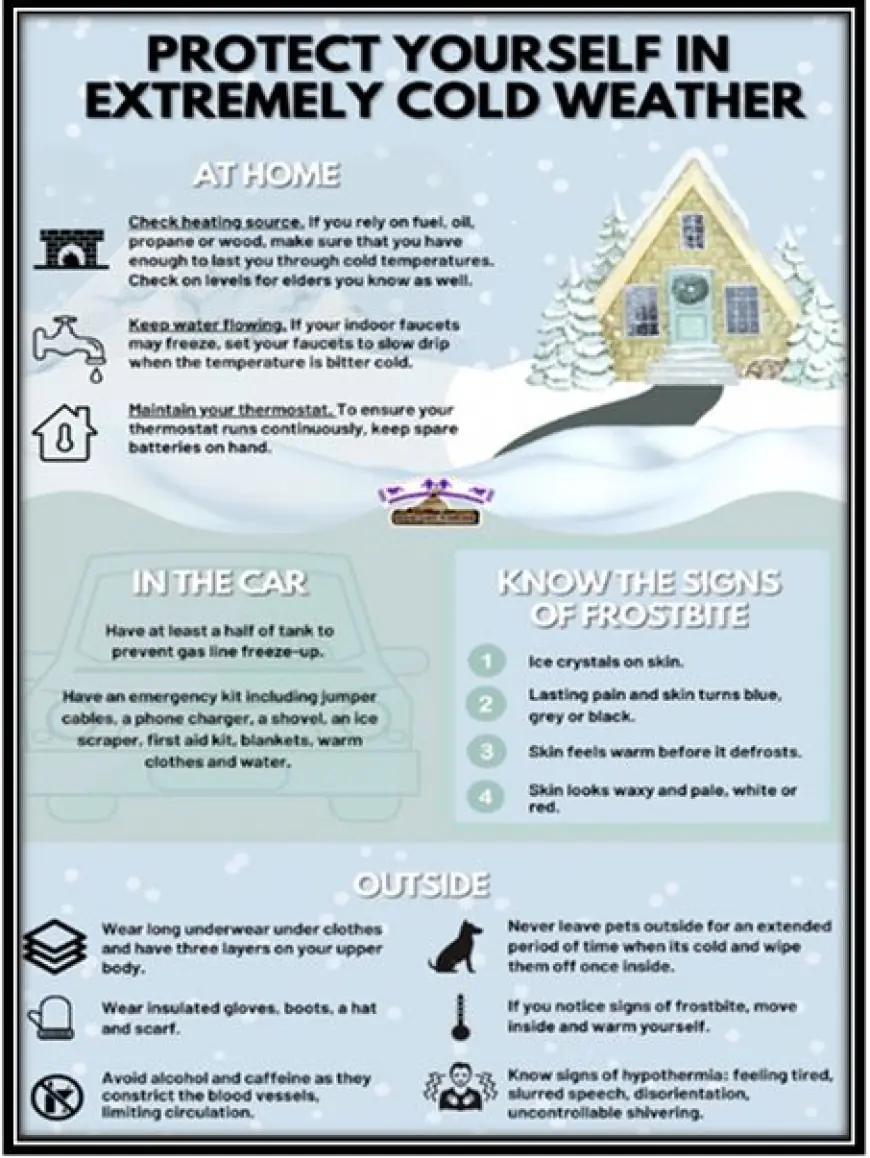What should we know about protecting our homes from the cold?
Get expert insights on protecting your home from the cold. Ensure a warm, secure environment for your loved ones with our proven winter-proofing tips.

Understanding Cold Weather Home Hazards
Insulation and weather stripping are often overlooked when it comes to protecting our homes from the cold, but they play a crucial role in maintaining a comfortable indoor environment. Proper insulation helps retain heat inside the house during colder months, reducing energy consumption and lowering utility bills. Furthermore, weather stripping around windows and doors prevents drafts and heat loss, ensuring that your home remains warm and cozy.
When it comes to insulation, choosing the right type for your home is essential. From traditional fiberglass to modern spray foam, each option has its own set of benefits and considerations. It's also important to inspect existing insulation for any signs of wear or damage, as compromised insulation can significantly diminish its effectiveness. Meanwhile, weather stripping should be regularly maintained and replaced as needed to keep it functioning optimally.
In conclusion, taking care of your home's insulation and weather stripping is an investment in both comfort and energy efficiency. By ensuring that these aspects are properly installed and maintained, you can create a more sustainable living space while also saving on heating costs during the winter months.
Insulation and Weather Stripping
When it comes to protecting our homes from the cold, one of the most important aspects is heating system maintenance. Neglecting regular maintenance can lead to inefficiency, breakdowns, and even safety hazards. So, what can we do to ensure our heating systems are in top condition? First and foremost, scheduling annual professional inspections and maintenance is crucial. This will not only ensure that the system is running efficiently but also help catch any potential issues early on.
In addition to professional maintenance, there are steps homeowners can take themselves to keep their heating systems running smoothly. This includes regularly replacing air filters, checking for any unusual smells or sounds coming from the system, and ensuring that there are no obstructions around vents or radiators. By staying proactive with heating system maintenance, homeowners can enjoy a warm and comfortable home while avoiding costly repairs down the line.
Heating System Maintenance
As the temperatures drop, it's crucial to protect your home's pipes from freezing to prevent costly damage and inconvenience. One effective method is to insulate your pipes with foam insulation or heat tape, particularly in unheated areas like attics, basements, and crawl spaces. Another important step is to keep a slow trickle of water running through faucets connected to exposed pipes during extremely cold weather. This can help prevent freezing by maintaining a continuous flow of water.
Furthermore, proper maintenance of external factors can also contribute significantly to pipe protection. Ensure that any outdoor hoses are disconnected and that exterior faucets are properly insulated or covered before winter sets in. By attending to these preventative measures, you can safeguard your home’s plumbing system and enjoy peace of mind during the chilly months.

Protecting Pipes from Freezing
As winter approaches, the task of winterizing outdoor spaces becomes crucial in protecting our homes from the cold. One often overlooked aspect of this process is garden furniture. Many of us tend to neglect our outdoor chairs and tables during the winter months, leaving them exposed to harsh weather conditions that can cause damage over time. By simply storing or covering these items, we can prolong their lifespan and maintain a visually appealing outdoor space.
Furthermore, addressing the issue of landscaping is essential in preparing for winter. Trim back any overgrown shrubs or plants to prevent them from weighing down with snow and potentially causing damage. Additionally, consider planting cold-resistant species that will thrive throughout the winter months, providing aesthetic appeal and preserving your outdoor oasis even during the coldest season. These simple yet effective steps not only protect your home but also ensure that your outdoor spaces remain inviting and functional throughout the winter.
Winterizing Outdoor Spaces
When the winter chill sets in, many people turn to alternative heat sources to keep their homes warm. While these alternatives can be effective, it's crucial to use them safely to prevent accidents. One popular option is a space heater, but it's essential to place them on a level, non-flammable surface and keep them away from curtains, furniture, and children or pets. Additionally, never leave a space heater unattended or use an extension cord with it as these practices greatly increase the risk of fire.
Another alternative heat source worth considering is a wood-burning stove or fireplace. These can create a cozy atmosphere but require regular maintenance and cleaning to ensure they function safely. It’s important to have your chimney cleaned annually to remove any built-up creosote that could cause a chimney fire. Furthermore, never burn treated wood or materials other than seasoned firewood in your stove or fireplace, as this could release toxic chemicals into your home and pose health risks.
Using Alternative Heat Sources Safely
In conclusion, ensuring the safety and warmth of your home is essential for a comfortable and secure living environment, especially during colder seasons. Implementing regular maintenance checks on heating systems, insulation, and weather-stripping can effectively prevent energy loss and keep your home cozy. Additionally, investing in smart technology such as programmable thermostats and carbon monoxide detectors can provide added peace of mind by improving energy efficiency and alerting you to potential hazards.
Moreover, embracing environmentally friendly practices like using renewable energy sources or eco-friendly insulation materials not only contributes to a sustainable lifestyle but also enhances the overall comfort of your home. By staying proactive in safeguarding against the cold, you not only protect your property from potential damage but also create a warm haven for yourself and loved ones. Remember that keeping your home safe and warm is not just about physical comfort; it's also about nurturing a space where cherished memories are made year-round.
Conclusion: Keeping Your Home Safe and Warm
As the chill of winter settles in, many homeowners find themselves facing a common dilemma: how to effectively protect their homes from the cold. Beyond simply turning up the thermostat, there are numerous considerations and strategies that can make a significant impact on both comfort and energy efficiency during the colder months. From insulation and weatherproofing to heating system maintenance and innovative technologies, understanding how to safeguard your home against the elements is a crucial aspect of responsible homeownership.
In this comprehensive guide, we will delve into the various aspects of protecting our homes from the cold, exploring practical tips, expert insights, and emerging trends in home insulation and climate control. Whether you're a seasoned homeowner looking for new ideas or a first-time buyer seeking essential knowledge, this article will equip you with valuable information to help keep your living space warm and cozy throughout the winter season. Join us as we uncover key principles for fortifying your home against icy temperatures and discover proactive solutions for maintaining a comfortable indoor environment when the mercury drops.







